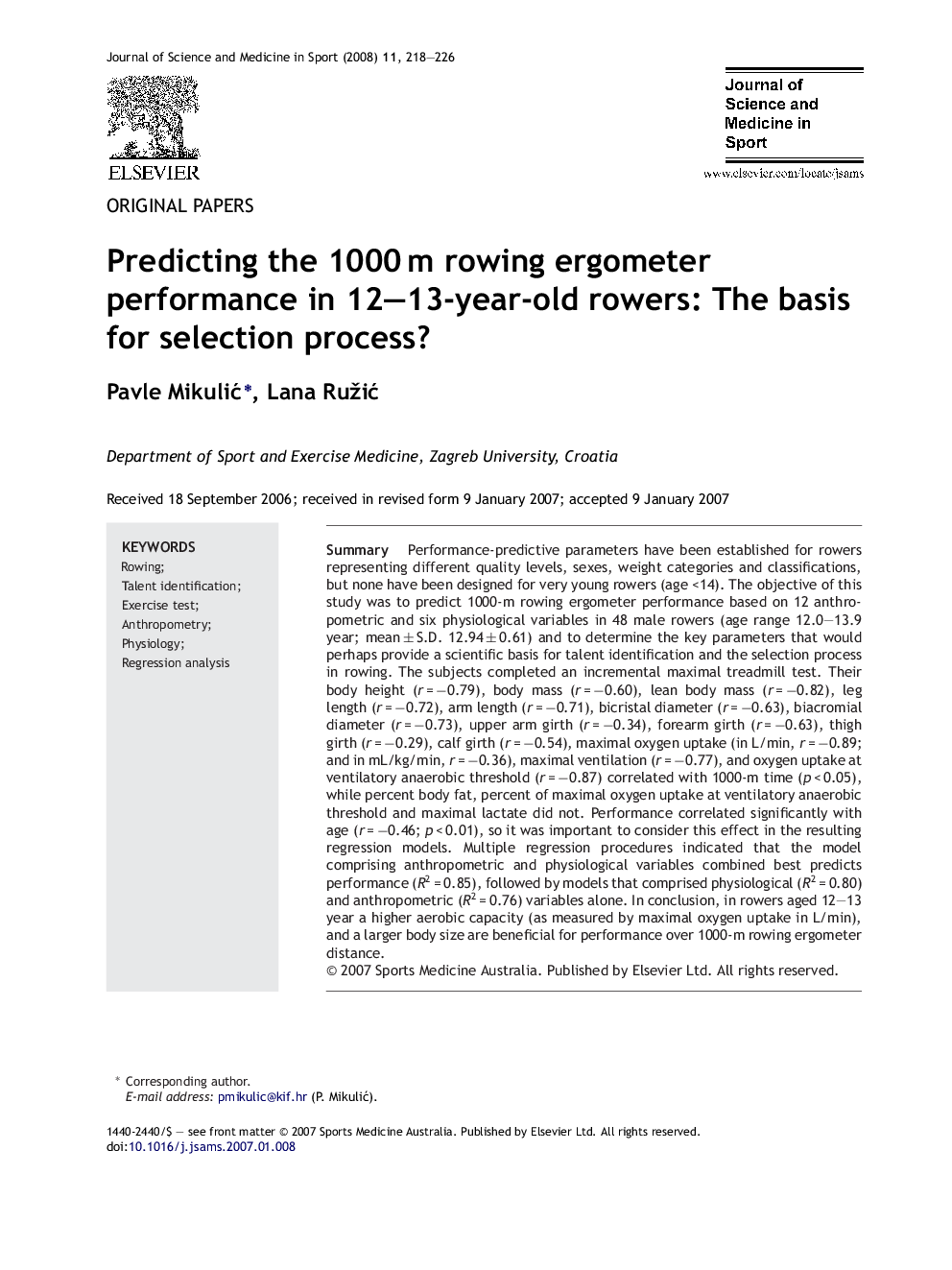| کد مقاله | کد نشریه | سال انتشار | مقاله انگلیسی | نسخه تمام متن |
|---|---|---|---|---|
| 2701905 | 1144481 | 2008 | 9 صفحه PDF | دانلود رایگان |

SummaryPerformance-predictive parameters have been established for rowers representing different quality levels, sexes, weight categories and classifications, but none have been designed for very young rowers (age <14). The objective of this study was to predict 1000-m rowing ergometer performance based on 12 anthropometric and six physiological variables in 48 male rowers (age range 12.0–13.9 year; mean ± S.D. 12.94 ± 0.61) and to determine the key parameters that would perhaps provide a scientific basis for talent identification and the selection process in rowing. The subjects completed an incremental maximal treadmill test. Their body height (r = −0.79), body mass (r = −0.60), lean body mass (r = −0.82), leg length (r = −0.72), arm length (r = −0.71), bicristal diameter (r = −0.63), biacromial diameter (r = −0.73), upper arm girth (r = −0.34), forearm girth (r = −0.63), thigh girth (r = −0.29), calf girth (r = −0.54), maximal oxygen uptake (in L/min, r = −0.89; and in mL/kg/min, r = −0.36), maximal ventilation (r = −0.77), and oxygen uptake at ventilatory anaerobic threshold (r = −0.87) correlated with 1000-m time (p < 0.05), while percent body fat, percent of maximal oxygen uptake at ventilatory anaerobic threshold and maximal lactate did not. Performance correlated significantly with age (r = −0.46; p < 0.01), so it was important to consider this effect in the resulting regression models. Multiple regression procedures indicated that the model comprising anthropometric and physiological variables combined best predicts performance (R2 = 0.85), followed by models that comprised physiological (R2 = 0.80) and anthropometric (R2 = 0.76) variables alone. In conclusion, in rowers aged 12–13 year a higher aerobic capacity (as measured by maximal oxygen uptake in L/min), and a larger body size are beneficial for performance over 1000-m rowing ergometer distance.
Journal: Journal of Science and Medicine in Sport - Volume 11, Issue 2, April 2008, Pages 218–226